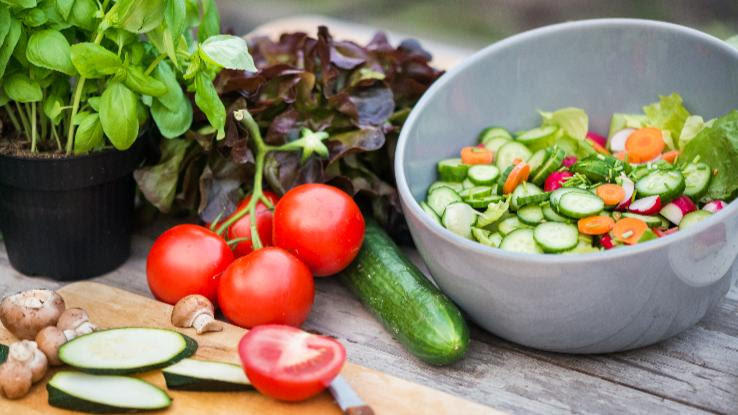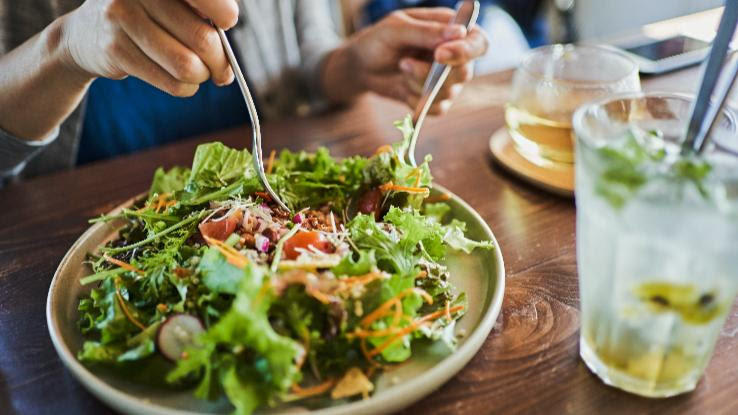How to Make Low Sodium Beef Jerky

There are enough of abundant sources of salt in our diets. Open upward a cookbook to just about whatsoever page, and you'll probably detect that the recipe on it mentions adding a pinch or two of common salt for flavor — fifty-fifty if it doesn't include salt on the ingredients listing! And that's non to mention the salt content of processed and prepared foods we choice up at the grocery store. Tabular array table salt is a common ingredient in food, and information technology's i of our chief sources of sodium. Some Americans consume an average of 5 or more teaspoons of salt every day, and even if a food doesn't taste salty, information technology could still be high in sodium.
While there are benefits to consuming sodium — it helps our fretfulness and muscles piece of work properly and balances the fluid levels in our bodies — getting too much sodium from your diet can be harmful to your health. Because consuming excess sodium tin atomic number 82 to high claret pressure, centre disease and stroke, many people are opting for low-sodium diets. Your doctor might accept even recommended 1. These diets can be an adjustment, so information technology'due south important to acquire the nuts and develop a meal program. Go started with these tips and food recommendations.
What Are the Benefits of a Low-Sodium Diet?

Salt is oftentimes added to food equally a preservative and to impart more flavor. Fast foods, convenience or packaged foods, frozen meals, snack foods, and other sweetness and salty treats often have loftier amounts of salt. If you're looking to cut back on the sodium you swallow, information technology's best to avoid candy foods. These include:
- Olives
- Pickles
- Anchovies
- Sauerkraut
- Most cheeses
- Chips and crackers
- Nearly salad dressings
- Soy and Worcestershire sauces
- Packaged tomato plant and other vegetable juices
- Cured and smoked meats like salary, hot dogs, sausage, ham, bologna and salami
Limiting the amount of sodium in your food has many benefits, including:
- Reducing aridity
- Improving your memory
- Lowering your blood pressure level
- Lowering your risk of diabetes
- Improving your bones' construction
- Lowering your risk of headaches
- Decreasing your LDL cholesterol
- Decreasing bloating and swelling
- Lowering the gamble of kidney stones
- Preventing the take chances of a stroke
- Curbing your peckish for salty nutrient
- Preventing congestive heart failure
- Lowering your risk of a eye assault
- Improving and protecting your vision
- Lowering your risk of stomach cancer
- Decreasing your run a risk of kidney harm
- Decreasing the gamble of a brain aneurysm
- Improving your heart's ability to pump blood effectively
- Reducing the hardening and thickening of your arteries
Cutting back on sodium can meliorate your health in numerous means. It'south not e'er easy to go on a diet, but it tin be vital for your well-being. Think of adopting a low-sodium diet as making a long-term lifestyle change that can improve your health in ways you might not imagine.
Tips for Cutting Back on Sodium

On a low-sodium diet, your master goal is to cut dorsum on the table salt you consume. Y'all can go started by reducing the corporeality of salt y'all add to your everyday cooking. In add-on, you can likewise boost the flavor salt would normally add together to food past using flavored vinegar, infused olive oil, herbs, spices and nuts instead. Adding these ingredients can help you get a little more than creative with your cooking, likewise.
Effort not to guess at the corporeality of salt you're adding to your food. The U.Southward. Nutrient and Drug Administration (FDA) recommends consuming less than 1 teaspoon of salt per 24-hour interval. While you're cooking, always measure the salt out in a measuring spoon instead of estimating how much yous're calculation. In improver, effort using half the amount of salt each recipe recommends.
Some other way to cut back on table salt? Eat more dwelling-cooked meals instead of ordering food from restaurants. While cooking at home isn't ever convenient, it helps you stay confident virtually what'due south in your food. You know how much salt (if any at all) is in a dish — something you tin can't exist sure of when you're heading out of the bulldoze-thru. When you practice order restaurant nutrient, ask for less salt. In add-on, enquire for sauces or dressings to exist served on the side; these are common sources of excess common salt and sugar.
Y'all'll also want to stay hydrated throughout the 24-hour interval if you're eating less table salt. A glass of cool water with a lime or lemon slice can quench your thirst and help limit cravings for salty food. This is particularly important after exercising, having surgery or recovering from an illness.
Planning Your Low-Sodium Grocery List

Get started with your low-sodium diet by planning your grocery shopping list. While you're out shopping, cheque diet labels and opt for items with fewer than 400 milligrams of sodium per serving. And, consider this low-sodium grocery listing as you get started — you'll accept your kitchen stocked with the essentials in no fourth dimension:
- Fresh fruits and vegetables, including apples, oranges, bananas, spinach, carrots and broccoli
- Dried beans and peas, including kidney beans, pinto beans, black-eyed peas and split up peas
- A multifariousness of seasonings, including herbs, spices, garlic, onions, peppers, lemon and lime juices, and ginger
- Canned vegetables that are low in sodium (be certain to bank check labels)
- Whole grains, including brown or white rice, quinoa and barley
- Vegetable oils, including canola, corn, olive and peanut
- Chicken or turkey breast without skin or whatsoever marinade
- Soy milk with added calcium, vitamin A and vitamin D
- Whole-grain breakfast cereals with no added sugars
- Whole-wheat or whole-grain pasta
- Fat-costless or low-fatty milk and yogurt
- Low-sodium fries and pretzels
- Whole-grain bread and bagels
- Depression-sodium salad dressings
- Lean cuts of beef or pork
- Unsalted nuts and seeds
- Low-sodium cheese
- Fresh or frozen fish
- Unsalted butter
- Eggs
It may take some time for your palate to adjust to new flavors and less table salt. Merely these changes are worth it for improving your health — and even your cooking skills!
Resource Links:
"Guidelines for a Low Sodium Diet | Patient Education," UCSF Health
"Salt and Sodium | The Nutrition Source," Harvard TH Chan School of Public Health
"Sodium in Your Diet," U.S. Food and Drug Assistants
Source: https://www.symptomfind.com/nutrition-supplements/low-sodium-grocery-list?utm_content=params%3Ao%3D740013%26ad%3DdirN%26qo%3DserpIndex

0 Response to "How to Make Low Sodium Beef Jerky"
Postar um comentário